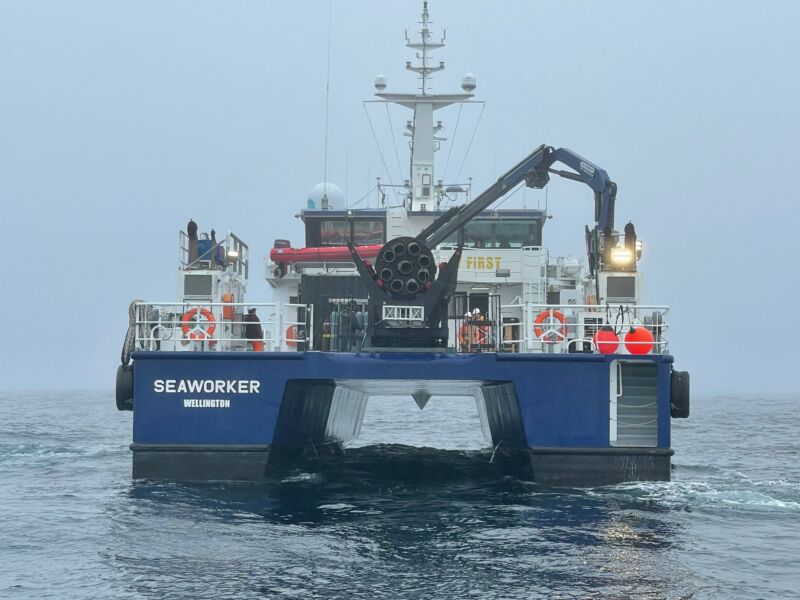On Monday evening Rocket Lab launched its 26th Electron mission, successfully deploying a record 34 small satellites into orbit. But attention for this mission was far more focused on what happened after the launch, not during it.
That's because, for the first time, Rocket Lab attempted to catch the falling first stage of its Electron booster with a helicopter. And briefly, they succeeded with this mid-air recovery.
As the rocket descended beneath its main parachute at about 10 meters per second, a drogue chute trailed behind with a 50-meter line. A Sikorsky S-92 helicopter tracked this descending rocket, and it, too, had a 50-meter line with a hook on the end of it.
"It's kind of like Ghostbusters in some way," said Peter Beck, founder and chief executive of Rocket Lab, in a call with reporters on Monday night. "You want those two streams to cross. Those two lines cross, and slide up one another, and then there's a grapple and capture."
That's exactly what happened on Monday before the pilots of the helicopter felt that the load induced on the vehicle was outside of what had been predicted in simulations. So they jettisoned the rocket, where it was recovered at sea. Beck said, with real data in hand, solving this problem for the next Electron recovery attempt should be "trivial." The helicopter is capable of lifting about 5 tons, he said, and the first stage has a mass of about 1 ton.
"We've been running simulated masses and simulated trajectories," he said. "Now we've got the real data. We had put tight limits on everything for everybody's safety the first time. This will be fixed very quickly."
A long effort
Recovering the first stage brings Rocket Lab near the end of a multi-year effort to become the second company, after SpaceX, to recover a vertically launched rocket. The main challenges for such an endeavor include coming back through the upper atmosphere at high speed without burning up, and then executing a soft landing for the hardware that keeps it out of the salty ocean water. To accomplish this SpaceX's Falcon 9 rocket relights some of its Merlin engines to slow down in the upper atmosphere, and then again near the surface to land propulsively on a coastal landing pad or a drone ship.
Because Electron is considerably smaller than SpaceX's Falcon 9 booster, Rocket Lab engineers do not have the mass margin to use extra fuel to land the first stage by re-lighting the engines. So they had to devise a set of small thrusters to control Electron's flight in the upper atmosphere, and then a parachute system to use in the lower atmosphere. Then, they came up with the mid-air capture system.
Solving all of this represents a massive engineering challenge, and now Beck and his engineers have demonstrated they can return a rocket from space and catch it with a helicopter. But this is only part of the problem solved, of course. Now Rocket Lab must determine how much of the Electron booster can be reused and how quickly, and how much that will cost.
Beck said Electron's first stage, with nine Rutherford engines, represents about 80 percent of the cost of a launch. He has pushed to reuse Electron, because flying the same first stage two or more times will reduce pressure on the company's manufacturing facilities. It's also a learning experience as Rocket Lab works to develop its next-generation Neutron rocket, which is larger and will land propulsively.
"It's a great learning opportunity for Neutron," he said. "And quite frankly we wouldn't have come into the Neutron project with the confidence that we do without having gone through the process of actually reentering a rocket stage."



3175x175(CURRENT).thumb.jpg.b05acc060982b36f5891ba728e6d953c.jpg)


Recommended Comments
There are no comments to display.
Join the conversation
You can post now and register later. If you have an account, sign in now to post with your account.
Note: Your post will require moderator approval before it will be visible.